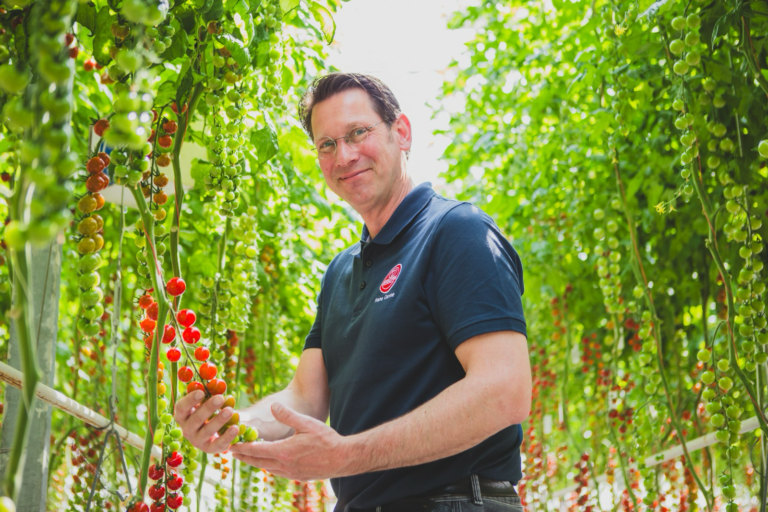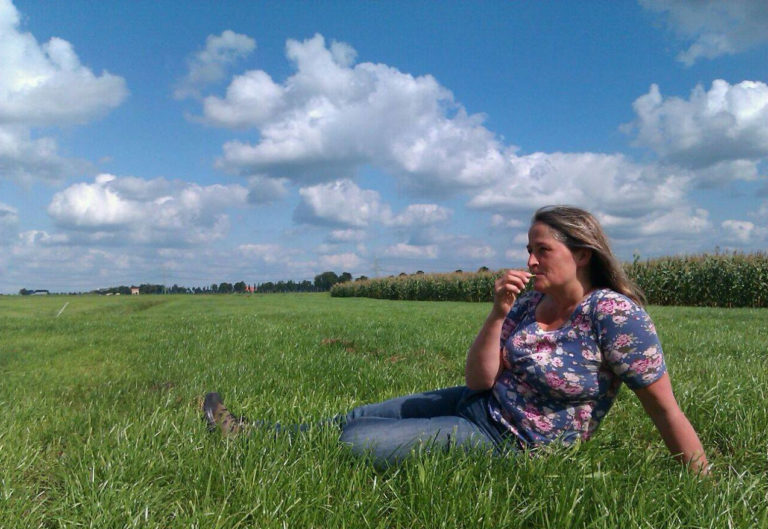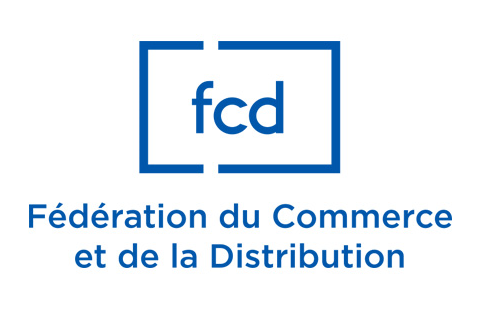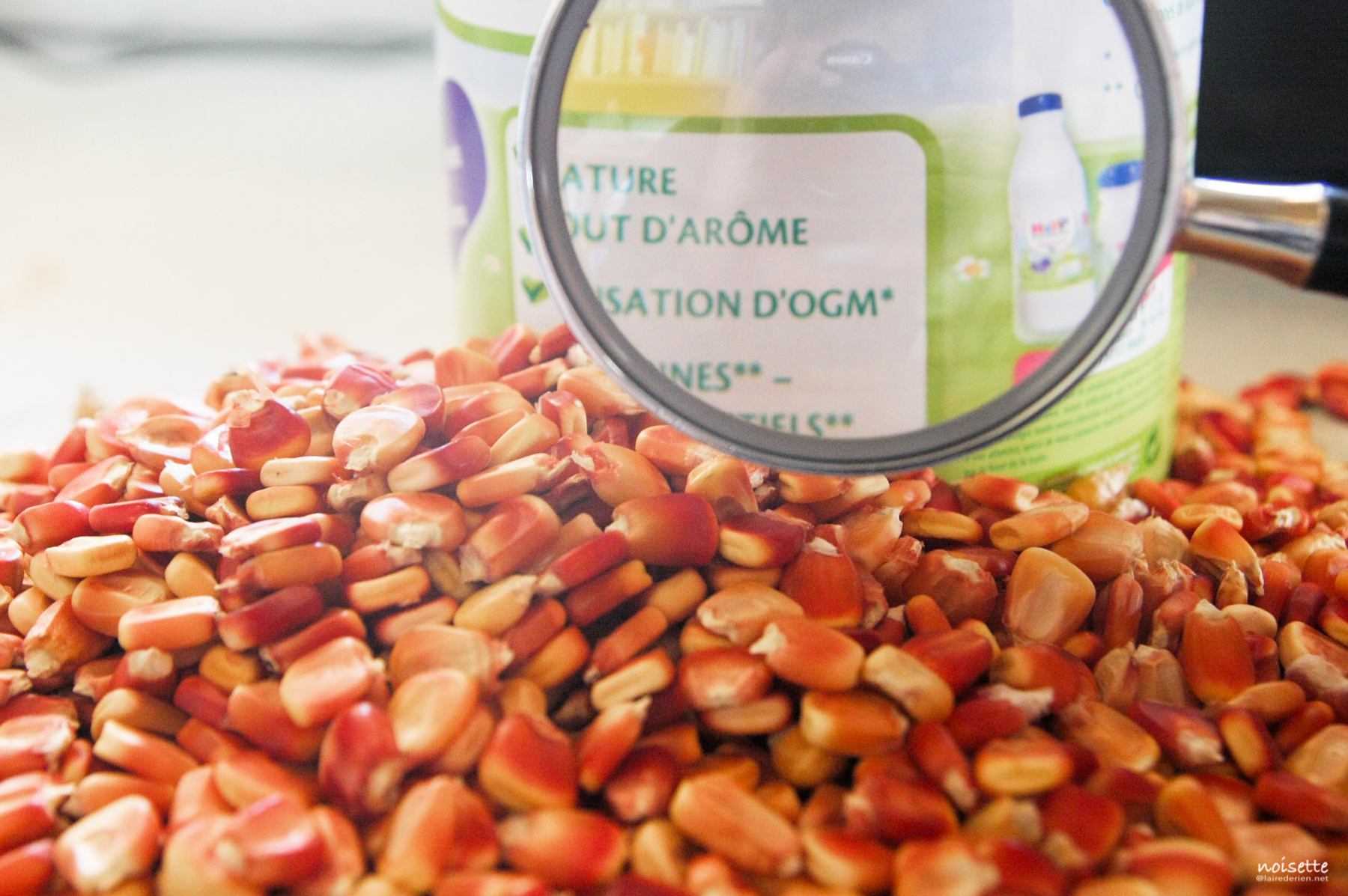France – An advisory body leaves the door open to GMO deregulation
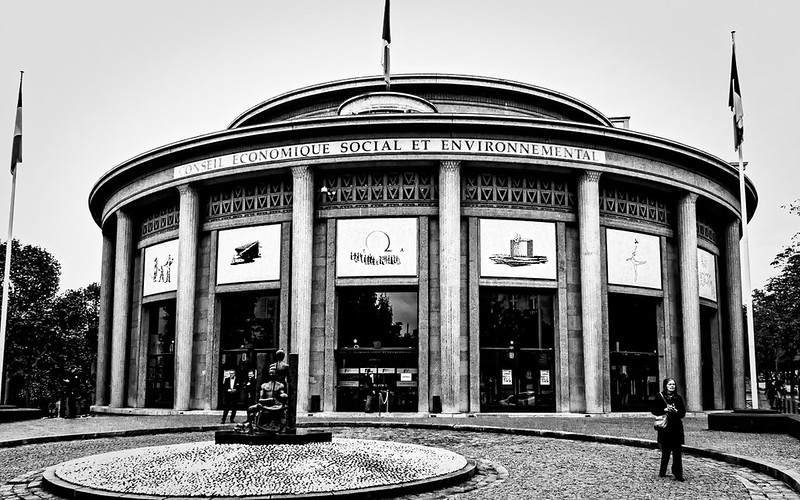
On 24 May, the French Economic, Social and Environmental Council (Conseil économique social et environnemental – CESE) issued an opinion on GMOs derived from so-called new techniques. Commissioned by the Prime Minister, the opinion was delivered within a very tight deadline. It recommends a legal regime close to that currently applicable to GMOs. But all the same, the Council accepts the biased framework laid down by the government and, thus, by the European Commission. In so doing, it validates the principle of a new piece of legislation which may allow many GMOs to escape regulation.
This summer, the European Commission is expected to publish a legislative proposal that could lead to the deregulation of many GMOs in the EU [1]. To develop the French government’s position on this issue, Prime Minister Elisabeth Borne has referred the matter to three consultative bodies, including the Economic, Social and Environmental Council (CESE) [2]. This assembly, which represents the various voices of civil society at large (professional organisations, trade unions, associations, etc.), had been given barely three months to deliver its opinion on the subject. It adopted its opinion on 24 May 2023, with 80 votes in favour, 19 against and 25 abstentions [3].
The CESE was tasked to examine the “societal expectations and challenges associated with new genomic techniques”. These so-called new techniques cover many GMOs, although the European Commission refers to them as “directed mutagenesis” and “cisgenesis” – terms which only seem to be more specific. In its opinion, the CESE uses all these expressions without questioning them or, in the case of “directed mutagenesis”, giving a precise definition. Without calling into questioning this flawed framework, the CESE responds to the three aspects defined in the government’s referral. These aspects correspond to the European Commission’s policy options: risk assessment and management; labelling and traceability; inclusion of sustainability criteria in regulations.
The CESE recommends copying the current GMO legislation
The CESE’s opinion includes strong recommendations. But they largely copy the obligations set out in the current GMO regulations. This is the case for risk assessment before and after marketing authorisation. But there is one new item: according to the CESE, prior risk assessment should also cover “off-target […] or unintentional modifications” and “the adventitious and persistent presence of DNA remnants of the transformation vector”. With regard to Crispr, the CESE admits that “hazard cannot […] disappear completely”. A posteriori risk assessment, says the CESE, should be carried out through a “socio-vigilance” network. Its role would be to observe “changes in agricultural practices, lifestyles, the structuring of supply chains, and the sharing of the value and other benefits of these innovations between the various stakeholders (seed companies, farmers, manufacturers, distributors, consumers, local residents, etc.)”. Socio-vigilance recalls a provision of the current EU GMO directive, which stipulates that every three years the Commission must issue a report containing an assessment of the socio-economic implications of the deliberate release and placing on the market of GMOs. Only one report has been published since the directive came into force in 2001, in 2011 [4]. In France, the Biovigilance Committee has only met infrequently [5].
The CESE also recommends systematic traceability and labelling, again copying obligations already laid down in the current GMO directive. A number of players are calling for these obligations to apply to GMOs produced by so-called new techniques (certain players in the retail sector, farmers’ organisations, consumer and environmental protection associations) [6]. But the CESE gives no practical indication as to how this traceability would be implemented. This gives the government a pretext for not following this recommendation. Without traceability, the effectiveness of the labelling obligation is compromised.
Finally, on the so-called sustainability criteria (reduction of pesticides, resistance to biotic and abiotic stress, etc.), the CESE suggests that “consideration could be given to not authorising products derived from NGTs that would be considered detrimental to sustainability objectives”. Thus it rejects one of the European Commission’s policy scenarios consisting in creating sustainability incentives for authorisations (waiving of fees, faster approval…). No such procedure exists under current regulations.
In addition to these three points, the CESE makes a series of further recommendations, including one on intellectual property (see text box below).
According to Sylvain Boucherand, one of the two co-rapporteurs, the opinion “emphasises the potential risks that may be associated with these technologies, and this was also at the centre of our recommendations”. This caution stems, among other things, from “the largely unfulfilled promises” of GMOs. However, the opinion more looks like an ill-balanced compromise: it advocates a new legal regime close to the existing one to be applied to a vague category of so-called new GMOs.
The CESE accepts the Governments’ bias
Admittedly, the timeframe was not conducive to in-depth analysis and debate. These conditions are modestly regretted by the CESE itself, and more directly by certain members who spoke at the plenary session. They partly explain the unusually high number of votes against and abstentions. The difference in treatment with the other advisory bodies referred to by the Prime Minister raises questions. For example, why is the National food and health safety autority (Agence nationale de sécurité sanitaire de l’alimentation, de l’environnement et du travail – Anses), a scientific body, not due to give its opinion until September 2023, well after the supposed publication date of the European Commission’s legislative proposal? And why hasn’t the National Consultative Ethics Council (Conseil consultatif national d’éthique), whose current president is Jean-François Delfraissy, been given any deadline for delivering its opinion, while the CESE had to deliver its opinion within a very tight deadline, even though the European Commission’s timetable had already been known for some time?
To draw up its opinion, due to time constraints, the CESE heard and met with 12 people, including three working at the National food and health safety autority and five representing the seed, plant oil and biotechnology industries (Union française des semenciers, Fédération nationale des corps gras, Terre Inovia, Neoplants) [7]. Not one representative of an agricultural union or of a consumer or environmental protection association was interviewed. However, it is to be noted that one of the two co-rapporteurs, Hervé Biés Péré, is vice-president of the FNSEA – the main French farmers’ union, member of COPA-COGECA and criticised for promoting an industrial farming system.
This perhaps partly explains why the CESE doesn’t at any point question the relevance or appropriateness of a new regulation, the very practical effect of which may be to remove an ill-defined category of GMOs from the existing GMO regulations. On the contrary, the CESE says that it is necessary to reflect on the legal status of “directed mutagenesis” and cisgenesis, grouped together under the term “NGT (new genomic techniques)”. However, it neglects to point out that, even though it is not explicitly named in the GMO regulations, cisgenesis is directly referred to as one of the examples of genetic modification techniques resulting in regulated GMOs [8]. Its legal status is therefore not unclear. As for “directed mutagenesis”, the CESE does not note that this expression is scientifically imprecise: it can refer to a diversity of plant material used and to a diversity of technical protocols used to induce mutations.
Unease is further due to the CESE’s claim that “plants derived from NGTs could in theory have been derived from natural mutations or conventional selection methods”. And that “these NGTs differ from conventional selection techniques and the generation of random mutations because they are targeted. They therefore produce the desired changes more quickly and at lower cost”. These two claims seem to have come straight out of the communications departments of biotech companies. A position favourable to new genetic modification techniques was also defended by the co-rapporteur, Hervé Biés-Péré, vice-president of the FNSEA. During the plenary session, he said that, in the face of challenges such as climate change, “(w)e also have tremendous leverage if we know how to put our trust in science, in the ongoing advances made possible by research, in the hopes founded on gifted plants capable of capturing nitrogen from the air, consuming less water, and strengthening their natural immunity to known or as yet unknown aggressors. This is the whole point and objective of plant breeding, which used to take decades but can now be accelerated thanks to scientific progress. I’m referring, of course, to the famous genetic scissors called Crispr/Cas9, which can be used to perform surgery on the genome to give it the qualities it needs to meet the challenges mentioned above [i.e. climate change]”.
Finally, another source of unease is that the CESE’s opinion doesn’t cover GMOs produced by “in vitro random mutagenesis” (sic). According to CESE, the Court of Justice of the European Union ruled in February 2023 that this technique is exempt from GMO regulation. The same interpretation was put forward by the Fédération des Oléagineux et Protéagineux (FOP) and the Union française des semenciers (the latter was heard by the CESE in the context of this opinion). However, the Court, which never used the expression “in vitro random mutagenesis”, has not ruled that these GMOs are excluded from the regulations [9]. But according to the CESE, these GMOs are not covered by existing regulations and will not be covered by future regulations either. This is a considerable blind spot, because the expression “random mutagenesis” is just as imprecise, scientifically speaking, as “directed mutagenesis”. By accepting these flaws in an opinion that tries to have it both ways, the CESE is ultimately leaving the door open to the deregulation of GMOs.
Meagre recommendations on intellectual property
The CESE calls for an intellectual property regime that “does not stifle innovation and supports the SME ecosystem”. However, the CESE only gives some vague recommendations without specifying how they should be applied in practice. And for good reason, it states that “the issue of intellectual property has not really been explored in depth”. The CESE explains, for example, that companies should not limit their innovation efforts to the few most widely cultivated varieties, and that innovation subsidies should “enable small companies to finance evaluations where necessary, without undermining the quality of risk assessment systems”. On the issue of patents, the CESE says that it is committed to “not privatising living organisms” by extending them to living organisms. This may be seen as wishful thinking, as many living organisms are already patented. Such formulation also leaves the field open to various interpretations, given the complexity of the subject. The CESE further recommends developing the Plant Variety Certificate (PVC) for “products derived from NGTs” and maintaining the non-patentability of plant material, without raising the pressing issue of patents on genetic information. This seems to echo the communication strategies recently adopted by the seed industry and licensing platforms such as the ACLP (Agricultural Crop Licensing Platform), which – curiously enough – takes an anti-patent stance [10]. The system of “compulsory licences at a reasonable cost [for SMEs]”, also suggested by the CESE, runs counter to the platform system, which is considered to be financially inaccessible for small structures. All of this is quite confusing. In conclusion, the CESE recommends “discussing the innovation ecosystem and the various sharing mechanisms in order to properly support future regulatory changes and promote the general interest”.
[1] ,
, « Objective 2030: deregulate most GMOs in Europe? », Inf’OGM, 16 September 2022.
[2] , « Le gouvernement saisit le CESE sur les nouveaux OGM », Inf’OGM, 5 April 2023.
[3] Cese, « Les attentes et les enjeux sociétaux liés aux nouvelles techniques génomiques », May 2023.
[4] European Commission, « Report from the Commission to the European Parliament and the Council on socio- economic implications of GMO cultivation on the basis of Member States contributions, as requested by the Conclusions of the Environment Council of December 2008 », 2011.
[5] , « FRANCE – Aucune surveillance des cultures », Inf’OGM, March 2007.
[6] See:
![]() , « Nouveaux OGM : précaution exigée par les consommateurs allemands », Inf’OGM, 29 November 2022.
, « Nouveaux OGM : précaution exigée par les consommateurs allemands », Inf’OGM, 29 November 2022.
![]() , « Nouveaux OGM : les supermarchés européens pour un étiquetage strict », Inf’OGM, 24 October 2022.
, « Nouveaux OGM : les supermarchés européens pour un étiquetage strict », Inf’OGM, 24 October 2022.
[7] The other four members are civil servants (three senior civil servants and a professor at the Muséum National d’Histoire Naturelle). One of them is Paul Vialle, former chairman of the Permanent Technical Committee for the Selection of Cultivated Plants (CTPS).
[8] Annex I A part 1 of Directive 2001/18/EC of the European Parliament and of the Council of 12 March 2001 on the deliberate release into the environment of genetically modified organisms and repealing Council Directive 90/220/EEC.
[9] ,
, « OGM – La justice européenne ouvre la porte à la déréglementation », Inf’OGM, 9 February 2023.
[10] ACLP is a platform, launched on 19 January 2023, which enables the private companies that are members of this club, set up by Corteva, Bayer, BASF, Syngenta and Limagrain in particular, to decide, which of the members have the right to use their patent. See:
![]() ACLP website.
ACLP website.
![]() Robinson C., « Plant breeders’ associations and seed companies claim to oppose patents on new GMOs – but there’s a catch », GM Watch, 5 March 2023.
Robinson C., « Plant breeders’ associations and seed companies claim to oppose patents on new GMOs – but there’s a catch », GM Watch, 5 March 2023.
![]() , « Some seed companies are opposing patents but… », Inf’OGM, 29 March 2023.
, « Some seed companies are opposing patents but… », Inf’OGM, 29 March 2023.






